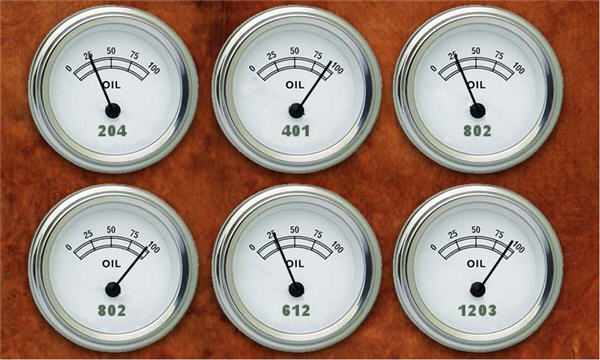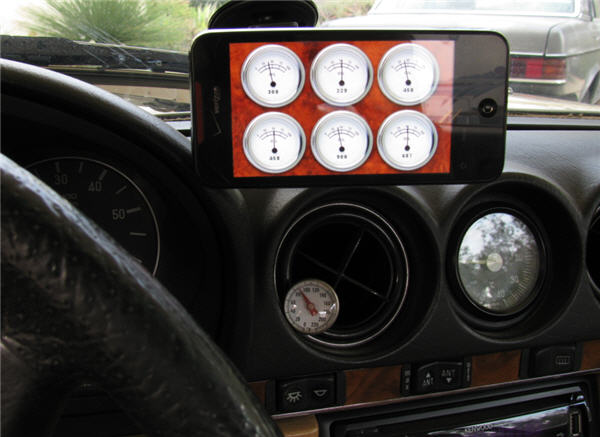 |
 |
 |
 |

|


|
|
|
|
|
|
#1
|
||||
|
||||
|
Engine Instrumentation Project
I've decided to take on a new project with the diesel 107, specifically to do some additional instrumentation on the engine using a microcontroller to manage the data. The plan is to take what I learned from the electric vacuum pump project and apply it to a new project.
The concept is to add an electronic "gauge cluster" to the car. I plan on having EGT, boost, oil temp, trans temp, intake temp and vacuum. Here is an image of the application running without sensors hooked up.  The intent is to have all the sensors hooked up to the microcontroller and then process and upload the data to an Android device (a no longer used HTC Incredible phone) wirelessly (bluetooth) to do the presentation of the data. Since the data is not as critical as water temperature, oil pressure, fuel etc, are, monitoring the data by loading an app on the phone when desired is an entirely adequate design. Each gauge has an analog needle as well as the digital read out of the current data. I can definitely capture and process the data, and I have had subsets of real data actually running on the app (vacuum) and simulating other readings with a potentiometer. I'll re-do the gauge faces with appropriate scales and legends as I start working with real data. (The gauge faces and burl background are just an image, and the Android app just paints the needles and digital readouts based on the sensor data). As it currently sits, the needles change based on the position of the cursor on the screen and the digital read out is just a function of a multiple of that. I can also create other apps with different gauge faces and readouts if I get tired of the first one just by replacing the background image and repositioning the axis of each needle... or possibly even going with a full digital read out. The phone can be mounted anywhere, such as above the climate control or using any handy phone mount.   The one tricky thing is going to be getting bluetooth configured. It's done all the time but it's quirky. Finding a 3 bar MAP sensor is also going to be tricky. They're pretty scarce as they only come on turbocharged cars - but if I have to forgo boost, that's no big deal because I've got one in the dash. The electronics will be mounted in the engine compartment in a gutted plastic Mercedes relay case and utilize the harness and plug for clean wiring. By using a plastic one, the bluetooth can remain inside the case. The microcontroller I'll be using is the Arduino ProMini ($4).  I'll report additional progress periodically.
__________________
Current Stable
|
| Bookmarks |
|
|